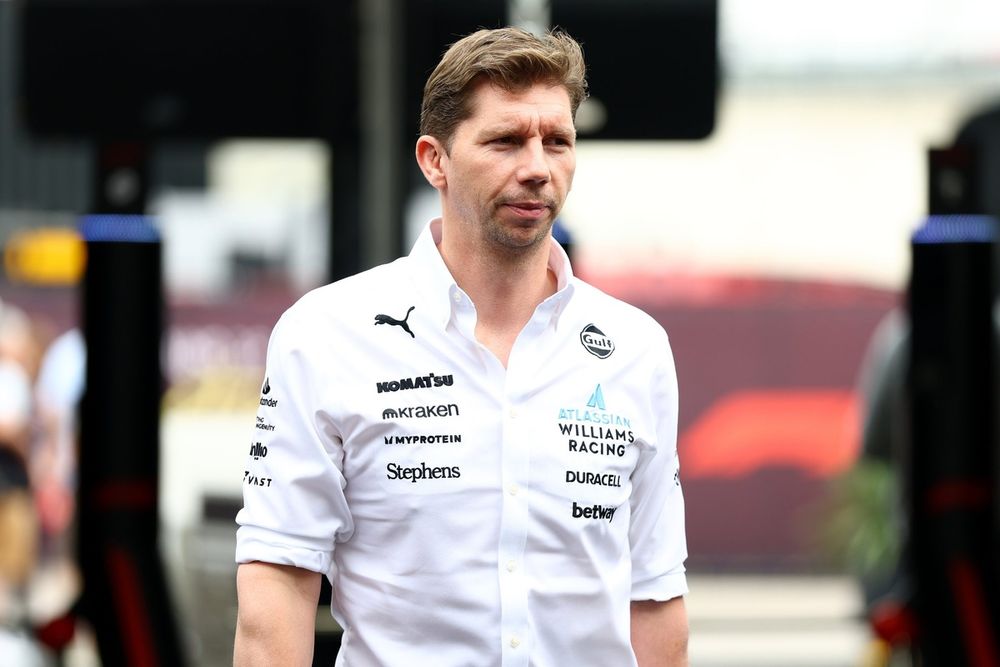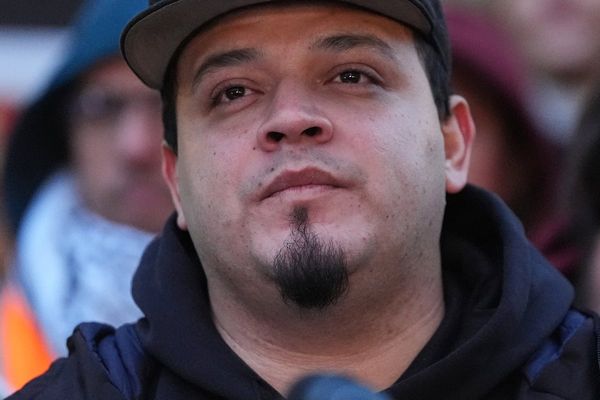
Williams team principal James Vowles has provided a deeper explanation of Carlos Sainz's retirement from the Mexico Grand Prix.
After sustaining damage to the front-left side of the car at the chaotic start of the race, the Spanish driver battled with lost sensors, vibrations and tyre degradation before he clipped the kerb and caught the wall on the rear corner of the car. While there was no significant damage to the FW47, he retired from the race.
"So first of all, what happened to Carlos is that Turn 1 incident, it was three cars coming to one - Alonso, Carlos and Lawson - really in a space that only one car or maybe two cars can fit. That created damage on the front-left side of Carlos’s car," Vowles explained during The Vowles Verdict.
"So actually in the end we saw a wheel shield that was broken, but to us what we saw was a vibration that was just getting worse and worse and all of the sensors on the front-left and the front-right started to fail, so we lost wheel speed sensors, brake sensors, a huge amount. The impact on that is obviously control systems, which rely on knowing what the four wheel speed sensors are, weren’t working as well as they should have done. One of those impacts was the pitlane speed limit, where we caught 0.2 km/h over the limit.
"Fundamentally, it’s a struggle in that circumstance. The rear wheel speed sensors have slipped on it and it can go slightly quicker than you anticipated it to be. But the real question is at the end of the race, it was simply that we had been pushing very hard on used tyres. Carlos just got slightly caught out with one of the kerbs when he did, he impacted into the wall just on the rear corner, and then after that drove forward and stopped because it was a reasonable impact.
"No significant damage, nothing left on the floor, but his race was over, he was already outside the points at that stage, so I think really very worn tyres pushing very aggressively into the race to catch up to the points."
In addition to the other issues, Sainz was first of all handed a five-second penalty for speeding in the pitlane and then a drive-through penalty for the same infraction. Vowles explained why this happened.

"We're very reliant on the wheel speed sensors of certainly the front axle, but ideally all four corners to know exactly what speed that car's doing, because in the pitlane, most teams are tuning to around about 79.8 or 79.9 km/h. The limit is 80. We clocked 80.2.
"Now, on our own measurements, it's very hard to see that because all that was left on the car, all front-wheel speed sensors had completely failed after that contact at the beginning. Pretty strange for the front-right too, but the vibration was so significant that it deteriorated all the electronics in the front axle.
"The result of that was we were reliant on measuring the speed on the rear axle, which you would have thought would be OK. However, we have a lot of slip, as you would imagine, there's quite a bit of power that goes through those rear tyres, and they rotate beyond what is the normal speed as a result of it. So it's very hard to track what is a speed above ground relative to the speed that the wheels are measuring on the rear axle.
"So a lot of the time we use the front axle as a result of that, certainly for control systems and the pitlane speed limit. That was the first of those. So the first time we were clocked, we defaulted the mode to make sure we put it into a mode we thought was reasonably safe for a pitstop, but was still clocked 0.2 km/h over. That was a five-second penalty.
"What we then did is we cannot rely on that control system anymore. It was quite, you saw it, in fact, on how the car was jumping. It was really not a great way to be going up and down the pitlane, so for the second stop, we asked Carlos to drive manually. So we took the pit speed limiter off and fundamentally drove to around about 73, 75 km/h, so 5 km/h below where he could control it on the way in. What happened is, that was fine. We got into the box, we were below the limit.
"On the way back out again, the drivers are used to clipping into that limiter to slow the car down, but without the limiter in place, Carlos went just a little bit over it. By a few km/h on exit, but that was enough to get a second pitlane speed limit problem.
"The third one, we just drove through the pitlane at around about 70-72 km/h just to make sure we were completely below it. That was for the drive-through penalty. So everything was instigated from the first problem, but as you can see how it escalated, one of the learnings from that is I think we could have done a better job overall as a team, and some learnings to take away for next time."








Read and post comments